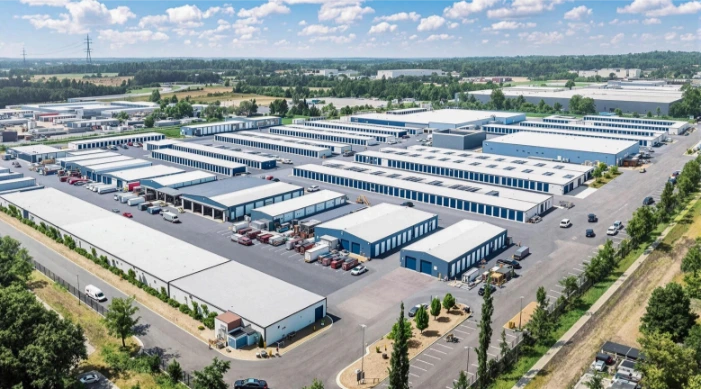IOS: From Gravel Lots to Wall Street Darling – The Institutionalization Nobody Saw Coming
Well, well, well. Look who’s finally getting invited to the institutional real estate party. Industrial Outdoor Storage (IOS), once the unglamorous cousin of shiny logistics facilities, is now strutting down the red carpet like it owns the place. And you know what? It kind of does.
Let’s cut through the noise and get to the meat of this transformation. High-quality credit tenants are suddenly acting like IOS is the hottest ticket in town. Why? Because sometimes, the simplest play is the smartest one.
First off, let’s address the elephant in the room – or should I say, the 18-wheeler in the lot. Big-name tenants with deep pockets are waking up to what savvy investors have known for years: IOS is a goldmine hiding in plain sight. These aren’t your uncle’s gravel lots anymore; we’re talking about strategic assets that keep the supply chain flowing smoother than a well-oiled machine.
“But wait,” I hear you say, “Isn’t this just a fad? Won’t these tenants move on to the next shiny thing?”
Slow your roll, skeptic. This isn’t some flash-in-the-pan tech startup promising to disrupt the universe. This is good old-fashioned, cash-flowing real estate with a modern twist. These high-quality credit tenants aren’t just dipping their toes in; they’re diving headfirst into long-term leases. Why? Because in the world of just-in-time logistics, having a secure, strategically located outdoor storage space isn’t a luxury – it’s a necessity.
Now, let’s talk about the shift towards more structured and large-scale investments. Remember when IOS was the wild west of real estate? Those days are going the way of the dodo. We’re seeing sophisticated investors and funds creating entire platforms dedicated to IOS. They’re not just buying one-off lots; they’re assembling portfolios that would make traditional industrial investors green with envy.
And here’s the kicker – while everyone else was chasing after AI-powered warehouses and robot-filled fulfillment centers, IOS was quietly becoming the backbone of the entire operation. After all, those robots can’t do much without the materials stored in our humble lots.
But let’s not get too carried away with the hype. (Yes, I said hype. Even IOS isn’t immune to it.) The key to success in this sector remains the same: location, functionality, and strong operator relationships. Just because the big boys are playing doesn’t mean the fundamentals have changed. If anything, it means we need to be even more disciplined in our approach.
So, what’s the takeaway for the savvy investor? Simple. While others are still trying to figure out if IOS is a real asset class, you should be focusing on how to position yourself in this evolving landscape. The institutionalization of IOS isn’t just a trend; it’s a seismic shift in how the industry views these essential assets.
Remember, in a world obsessed with the next big thing, sometimes the biggest opportunities are right under our noses – or in this case, under our trailers. IOS might not be sexy, but it’s essential, profitable, and now, it’s institutional. And in my book, that’s a whole lot better than being the flavor of the month.
Just don’t expect me to start calling gravel lots “alternative logistics solutions” anytime soon. Some things should remain gloriously unglamorous.

